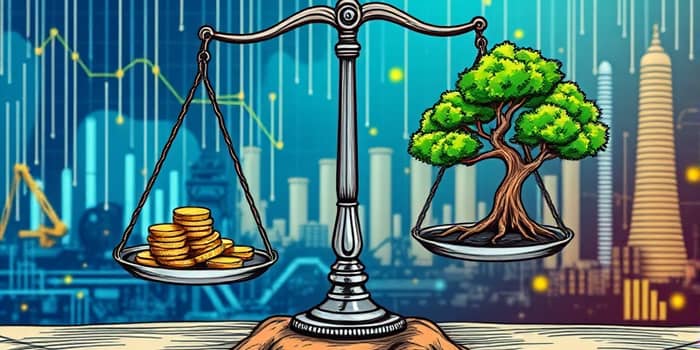
In a world increasingly focused on sustainable growth and stakeholder welfare, we must challenge the simplistic view that profit alone captures a company’s worth. By examining diverse valuation frameworks, from accounting-based metrics to non-market approaches, we uncover a richer understanding of true economic value.
Conventional accounting profit measures, as found in income statements, often ignore the full cost of capital and externalities. Firms may report healthy net income yet destroy value when capital costs and societal impacts are considered. This gap drives a demand for more insightful performance indicators that reflect real gains for shareholders, communities, and the environment.
Traditional metrics like ROI or ROE provide snapshots of profitability but fall short of revealing whether a business has earned returns above its required cost of capital. Such shortfalls can conceal value destruction and impede long-term strategic decision-making.
Economic Value Added (EVA) bridges the gap between net income and true shareholder value by subtracting a charge for all capital employed. It is defined as:
EVA = NOPAT – (Invested Capital × WACC)
Where NOPAT (Net Operating Profit After Taxes) represents core operating earnings after adjustments, and WACC (Weighted Average Cost of Capital) captures the blended cost of debt and equity.
Consider two illustrative examples:
These figures demonstrate how EVA exposes true wealth creation. Company B, despite identical NOPAT, delivers greater economic profit after capital due to lower investment and cost of capital.
When goods and services are traded, revealed preference methods harness market behavior to estimate value. Common techniques include:
However, these methods exclude non-market values, such as the existence of a pristine ecosystem or cultural heritage. To address this, stated preference approaches employ surveys:
While powerful, survey-based models can suffer from hypothetical bias and demand careful design to ensure robust and reliable estimates.
Beyond market goods, many assets—such as data, brand reputation, and ecosystem services—lack direct prices. Non-market valuation techniques help fill this gap. Examples include:
By adopting comprehensive valuation frameworks, organizations can assess the benefits of clean air, biodiversity conservation, and intangible assets like intellectual property. Policymakers leverage these estimates in cost-benefit analyses to design more effective regulations.
Accurate value measurement drives strategic investment, risk management, and transparent reporting. Key applications include:
The rise of big data, renewable technologies, and stakeholder capitalism highlights new challenges and opportunities. Firms are experimenting with real options analysis to value flexibility under uncertainty, and integrating environmental, social, and governance (ESG) metrics into their performance dashboards.
Ultimately, measuring true economic value requires blending financial rigor with ethical considerations. Decision-makers must embrace multidimensional performance metrics to align corporate goals with societal progress.
The journey beyond the bottom line reveals a complex terrain where financial returns, environmental stewardship, and social welfare intersect. By leveraging EVA, revealed and stated preference methods, and non-market valuation, we can illuminate hidden value and foster sustainable growth. As organizations navigate an increasingly data-rich and interconnected world, holistic value measurement practices will become indispensable in crafting resilient strategies that benefit shareholders and society alike.
References





